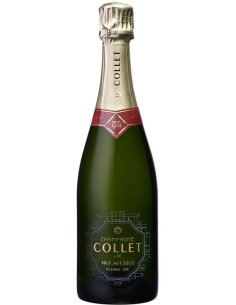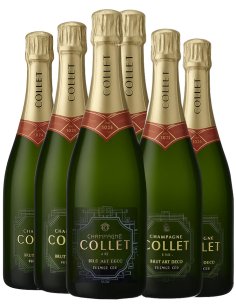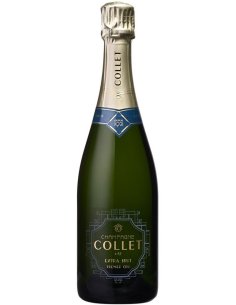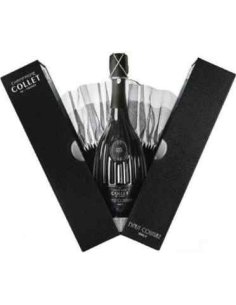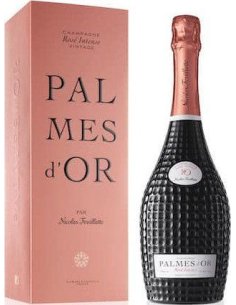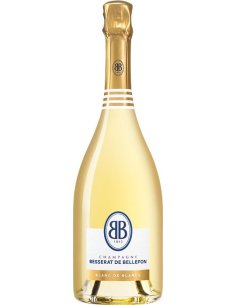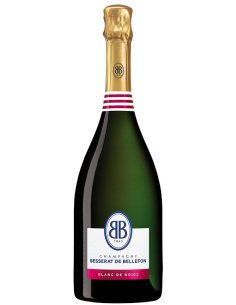
The label of champagnes sometimes bears the mention premier cru or grand cru. But does not include localities (as in Burgundy), or castles (as in Bordeaux), the wines of Champagne are municipalities. When you read: "grand cru champagne" on the label, it means that all the grapes come from towns classified as grand cru. A guarantee of provenance, in short.
How were the wines determined in champagne ?
Champagne has more than 300 wine-growing municipalities. At the beginning of the 20th century, each of them was quoted according to the quality of its wines, from which derives the price of the grapes paid by the merchants to the winegrowers. The 17 villages rated 100 are grands crus, those rated between 99 and 90 are premier crus and the towns listed below are not classified. The premiers crus and the grands crus do not take the plot into account, as in Burgundy.
17 Grands Crus and 44 Premier Crus in Champagne
The 17 grands crus are located in the Marne department, cradle of the wine region.
In the Montagne de Reims, where Pinot Noir thrives above all. There are 10 grand cru villages there.
In the Marne valley, north of Epernay, where Aÿ, also famous for its Pinot Noir, is one of the best-known grands crus.
On the Côte des Blancs, south of Epernay, the land of choice for Chardonnay. Premier Crus champagnes are also established in the Marne.
The grand cru designation indicates that all the grapes come from towns classified as grand cru. Champagne can come from several villages of this rank (the same goes for the Premier Cru mention). If a grand cru (or premier cru) village appears on the label, all the grapes come from it. A guarantee of provenance, in short.
The grands crus produce wines that are more powerful and complex than other villages ... provided that the producer knows how to express their potential.
The Champagne terroirs are classified into three categories (cru or village)
Of the 319 municipalities in the champagne production area, only 17 are entitled to the grand cru appellation and 44 to the premier cru 27.
Grand Cru
The grand cru classification is the most prestigious appellation in the A.O.C. scale: it is reserved "for wines from municipalities classified at 100 p. 100 27 on a scale reflecting the quality of the grapes28.
At the beginning of the last century, 17 communes of the Champagne vineyard were selected to benefit from the Grand Cru appellation. This distinction was awarded to them because of the characteristics of their soil and their exposure, particularly conducive to the production of the best grapes. This obviously has an impact on the selling price of these grapes, which is higher when they come from “Grand Cru” communes.
Premier Cru
There are 44 villages classified as Premier Cru, the grapes that make up a cuvée must come exclusively from plots of these villages for the Premier Cru mention to appear on the label, or from a plot of a village classified as Grand cru, which has been downgraded to Premier cru.
Champagne Besserat De Bellefon Blanc De blancs
Champagne Besserat De Bellefon Blanc De Noirs
List of villages classified as Premier Cru:
Avenay-Val-d'Or, Bergères-lès-Vertus, Bezannes, Billy-le-Grand, Bisseuil, Chamery, Champillon, Chigny-les-Roses, Chouilly en Pinot noir, Coligny (Val-des-Marais) en Chardonnay, Cormontreuil, Coulommes-la-Montagne, Cuis, Cumières, Dizy, Écueil, Etrechy en Chardonnay, Grauves, Hautvillers, Jouy-lès-Reims, Ludes, Mareuil-sur-Ay, Les Mesneux, Montbré, Mutigny, Pargny-lès-Reims, Pierry, Rilly-la-Montagne, Sacy, Sermiers, Taissy, Tauxières, Tours-sur-Marne en Chardonnay, Trépail, Trois-Puits, Vaudemange, Vertus, Villedommange, Villeneuve-Renneville, Villers-Allerand, Villers-aux-Nœuds, Villers-Marmery, Voipreux, Vrigny.

